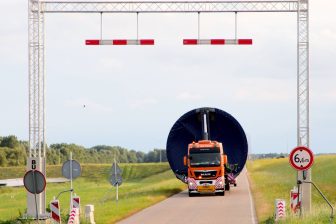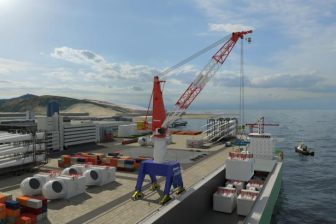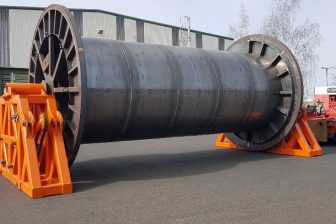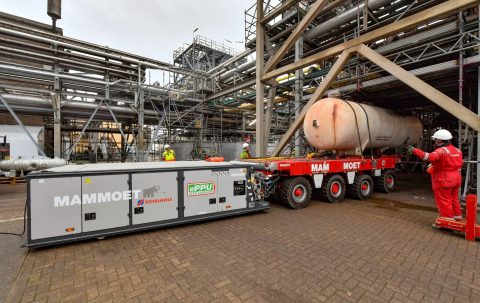
Mammoet makes a major step in project decarbonisation
Mammoet and Scheuerle have made a new step forward in decarbonising heavy lifting and transport links of the project supply chain. The two companies completed an undertaking recently at a Shell chemical plant in the Netherlands, replacing a production vessel using purely electric power.
The Shell facility produces feedstock for a range of everyday applications including medical equipment, car components and cellphones. When a key production vessel needed to be replaced, the customer was keen to look at how this could be done with the lowest possible environmental impact.
Seeking ways in which new technology can help to reduce – and eventually eradicate – the carbon footprint of projects, Mammoet has explored many possible solutions in recent years. One such focus has been a partnership with Scheuerle to transition its SPMT fleet from diesel to renewable energy.
Whilst electric technology is nothing new for domestic vehicles, the sheer force SPMTs are required to deliver in moving heavy items has presented significant barriers to finding an equivalent solution. But thanks to extensive research and testing this has now become a reality.
The ePPU was used with four axle lines of SPMT operating in an extremely tight area of the existing plant, which meant that there were only a few meters in which to manoeuvre the existing vessel out and drive the new one into position.
In fact, space was so limited that not all SPMT lines could be positioned beneath the outgoing vessel, meaning that it needed to be secured above the front two axle lines of SPMT, with the ePPU acting as a counterweight to balance the vessel as it was transported. A crane was then used to remove the old vessel and lower its replacement onto the SPMT in the same position. This was then moved back into place ready to be installed and commissioned.
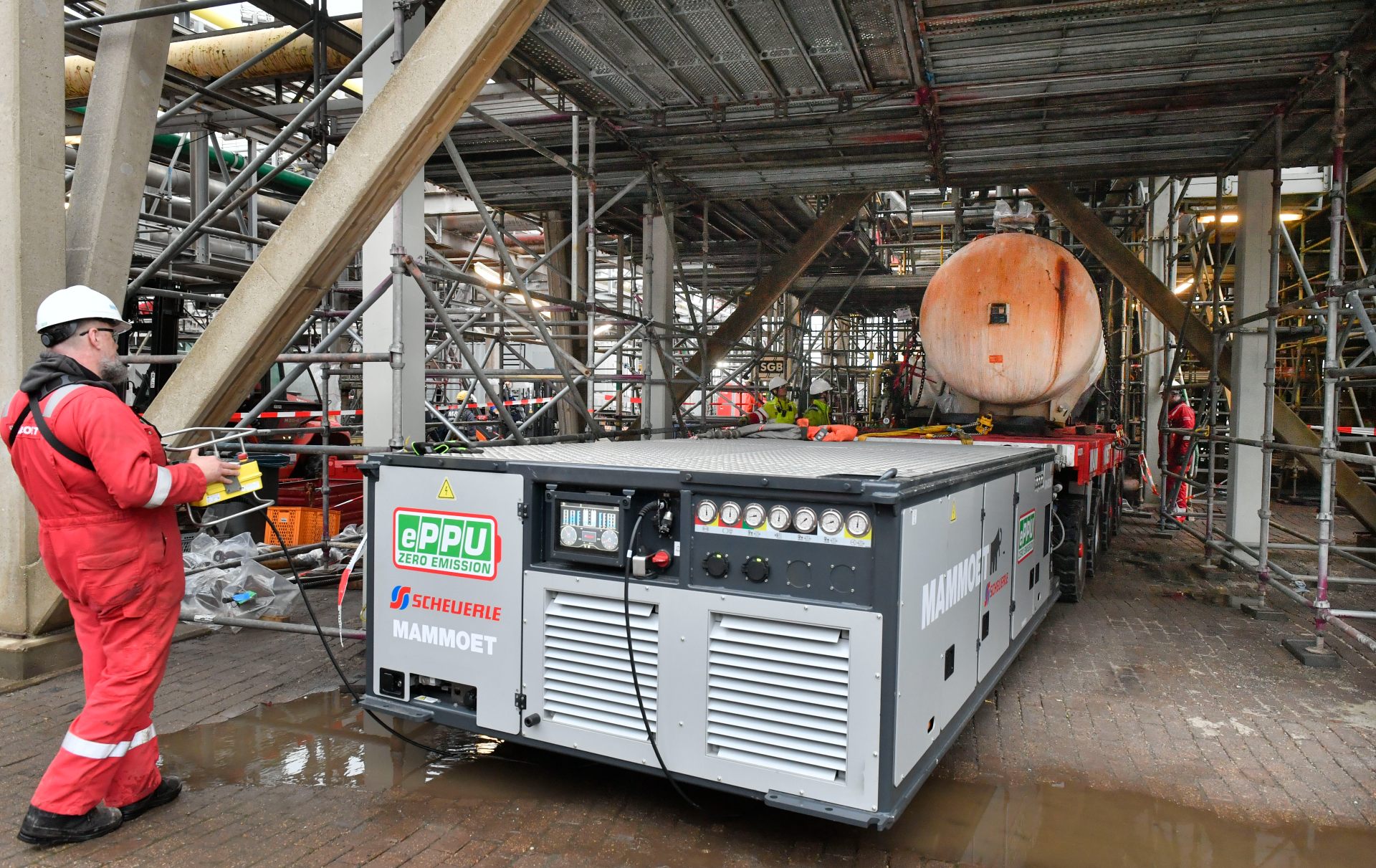
Using the ePPU delivered important benefits for the project. Ludo Mous, Operations Director at Mammoet Europe, says, “The ePPU is a really important step in how we support our customers with decarbonising projects. But in this case, the benefits were not limited only to a lower carbon footprint. With work taking place in a highly confined area, we would have been highly conscious of the emissions generated by a typical diesel PPU, and would need to carefully manage operatives’ exposure to it. By using an electric model, we removed this issue completely, whilst also creating a much quieter working environment.”
The successful application of the ePPU here signals just the start of an exciting development for Mammoet and the wider industry. Although there is still work to be done to ensure electric power is sufficient for use in larger scale SPMT projects, the technology is now proven in use and ready to be rolled out across a broader range of work around the world.
“We were extremely pleased that the ePPU performed as we expected, delivering a low-carbon solution for our customer. We expect demand for it to be high, in particular for projects that are looking for more sustainable options or where exhaust emissions must be kept to a minimum for safety reasons, such as civil projects taking place within tunnels or work inside nuclear facilities,” says Mous.

